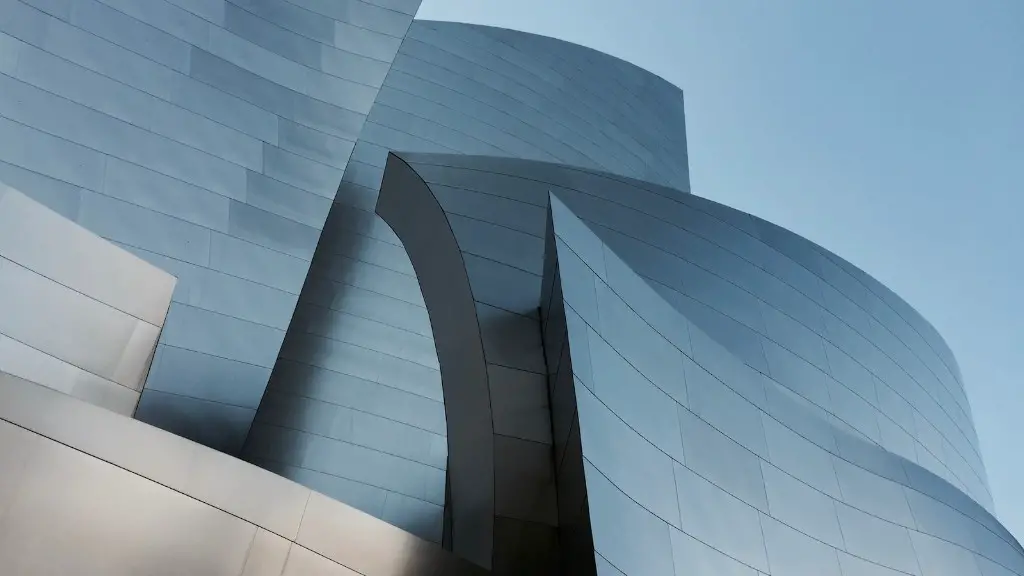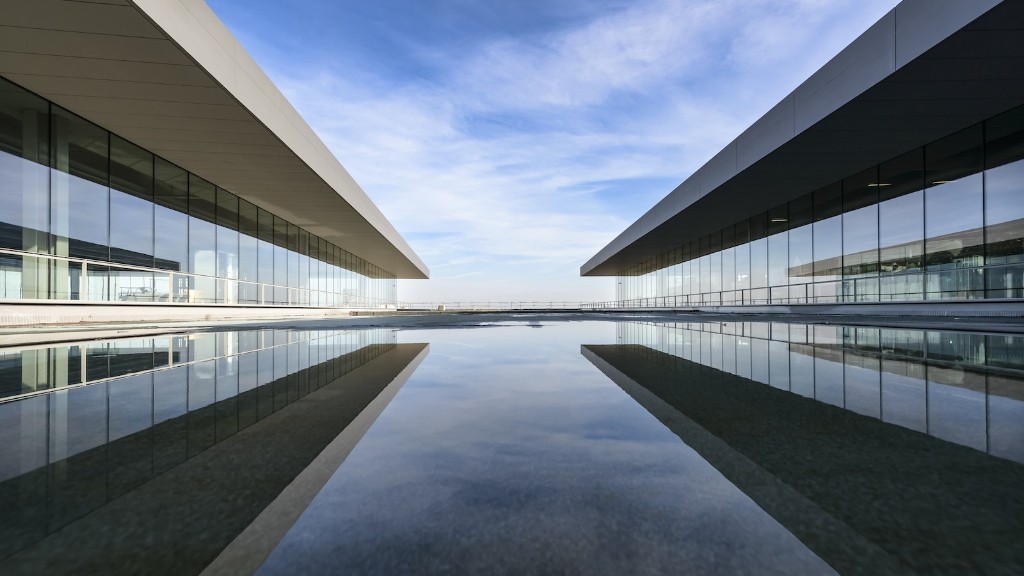Modern Architecture: A Look Into The Past
Modern architecture is a style of architecture that evolved in the late 19th century and early 20th century. It is characterized by a simplistic approach to form and function, and is often simple, linear and asymmetrical. This style of architecture is responsible for some of the most iconic buildings of the past century, as well as contemporary structures which are designed to stand the test of time.
This style of architecture emerged from a period of great transformations, from the industrial revolution to the emergence of new materials and technologies. Its development was strongly influenced by several key figures, including the architects Frank Lloyd Wright and Le Corbusier. While the two interacted professionally, their ideas about modern architecture were distinct and highly influential in their own right.
Frank Lloyd Wright developed the concept of ‘organic architecture’ which focused on creating structures that blended with the environment as well as being aesthetically pleasing. His works, such as the William Winslow House, Unity Temple and Robie House, demonstrate his groundbreaking approach to design. He also emphasised the importance of creating architecture that was comfortable and practical, creating greater consumer demand for modern designs.
Le Corbusier, on the other hand, championed the concept of ‘functionalism’ which focused on creating architecture that was all around efficient in terms of space and function. His work, such as the Villa Savoye and Unité d’habitation, demonstrate his commitment to this concept. His ideas have since become the foundation of modern architecture and design, with aspects of his style seen in many modern structures.
Today, many of the most iconic buildings such as the Guggenheim Museum, Seagram Building and the Sydney Opera House, are heavily influenced by the ideas of Wright and Le Corbusier. However, this style of architecture continues to evolve with the introduction of new materials and technologies, with contemporary buildings often using metal and glass to provide a more modern look.
Modern architecture is also now being shaped by the conversations of sustainable development, energy efficiency and climate change. Architects are increasingly being tasked with creating structures that are lightweight and energy efficient, able to provide enough space for occupants while requiring minimal resources.
The creation of modern architecture is an ongoing process, as architects continue to look for innovative ways to blend form and function in a way that feels relevant, sustainable and timeless. As the style evolves, it will continue to shape our cities, providing the backdrop to our lives for the foreseeable future.
The Impact Of Modern Architecture On Society
Modern architecture has had a profound impact on society, with its iconic structures often taking centre stage in a city’s skyline. From artistic pieces such as the Sydney Opera House to functional structures such as the Seagram Building, modern architecture is an integral part of our daily lives.
The influence of modern architecture can be seen in the way buildings are designed and built today, with buildings being designed with efficiency and sustainability in mind. Thanks to advances in engineering and the introduction of new materials, buildings such as hospitals, schools and airports are now designed to use minimal resources while providing maximum functionality and comfort.
The impact of modern architecture is also felt within the built environment, as it encourages people to think more creatively about space and its possibilities. While the style is often associated with functionality, modern architecture is also about creating structures that are aesthetically pleasing which has a positive impact on people’s wellbeing. People are often drawn to buildings that are visually stimulating and comforting, creating a more enjoyable environment for both work and leisure.
Modern architecture has helped to revolutionise cities and their appearance, allowing for more efficient urban planning and infrastructure. It has also been instrumental in inspiring people to look at the world differently, encouraging them to think innovatively about the spaces they inhabit.
Finally, modern architecture has had a major impact on the way in which people view the world. It has encouraged people to appreciate the importance of design, and to think critically about the way in which buildings are constructed. This has opened up a wealth of possibilities in terms of the design of public and private spaces, making it easier for people to express their creativity and individuality in the world around them.
Adapting To The Digital Age
The creation of modern architecture has evolved over time, adapting to the needs and expectations of the modern age. The introduction of digital technology has changed the way architects approach projects, with new software programs allowing for quicker and more efficient designs.
Consumers also now have more of a say in the process, with digital platforms such as Pinterest and Instagram allowing people to share ideas and discuss design solutions. The growing demand for customised buildings has also seen the introduction of 3D printing, allowing architects to quickly and easily create designs with exact measurements.
The internet and social media has also helped to promote modern architecture, with the concept of ‘starchitects’ emerging. This term is used to describe architects who have become renowned for their iconic works, often having a large following online as a result.
Modern architecture is also adapting to the needs of the modern age, with many architects now creating designs that are environmentally conscious. Sustainable design is becoming increasingly popular, as buildings are designed to use minimal resources while providing maximum comfort and efficiency.
Finally, the emergence of hybrid structures has seen a shift away from traditional designs, with architects now often combining traditional elements with contemporary ones to create unique, multifunctional spaces.
Criticisms Of Modern Architecture
Modern architecture has also been met with criticism over the years, with many believing that the style favours aesthetics over function. For example, some critics argue that some structures are designed with consumers in mind, rather than for the people who will actually use them.
The concept of sustainability has also caused issues, with some architects favouring ‘green architecture’ over traditional design. While this is an admirable goal, critics worry that these buildings are often less practical in the long run. Critics also worry that this type of architecture may become outdated faster than traditional designs, as people may tire of the aesthetic.
Finally, some architects have been accused of disregarding traditional architecture, believing that modern design is superior to its predecessor. While there are aspects of modern architecture that have improved on traditional designs, this disregard for the past has caused friction between some architects and experts in the field.
Despite these criticisms, modern architecture remains a powerful and influential style of design, providing the framework for iconic structures around the world. Its true impact on society is likely to become clearer in the years to come.
Alternatives To Modern Architecture
While modern architecture is a popular style of design that has been used for many years, there are alternatives that are becoming increasingly popular. Postmodern architecture is one example, in which traditional elements are combined with modern designs to create a unique and often playful aesthetic.
Contemporary architecture is also a popular option, with many architects now looking to combine a mix of traditional and modern designs to create a style that is both timeless and functional. This style incorporates aspects of modern and traditional designs, often using materials such as wood and stone to create an interesting contrast.
Finally, minimalist architecture has become increasingly popular over the last few years, with an emphasis on simplicity and functionality. Minimalist designs often focus on creating structures that look good but don’t take up too much space, making them ideal for modern living.
These alternatives offer an interesting alternative to traditional modern architecture, providing an opportunity for architects to explore new ideas and create structures that stand the test of time.
Addressing The Challenges of Modern Architecture
The challenges of modern architecture are becoming increasingly apparent in today’s society, with issues such as sustainability, affordability and consumer demand coming to the forefront. Architects are now having to think carefully about the materials they use, the way they design and build a structure, and the needs of the people who will inhabit it.
However, these challenges also present an opportunity for architects to create truly innovative designs. The emergence of new materials and technologies, such as 3D printing and exoskeletons, have opened up a world of possibilities for architects, allowing them to push the boundaries of design in new and exciting ways.
Sustainability is also now being addressed more than ever before, with architects looking for ways to reduce the environmental impact of their buildings. Innovations such as solar, wind and geothermal energy are being explored as a way to reduce energy consumption and reliance on fossil fuels.
Finally, the cost of modern architecture is also under scrutiny, with land and labour costs rising significantly in recent years. Despite this, architects are finding ways to reduce costs without compromising quality, with the introduction of low-cost materials and prefabrication helping to keep costs down.




